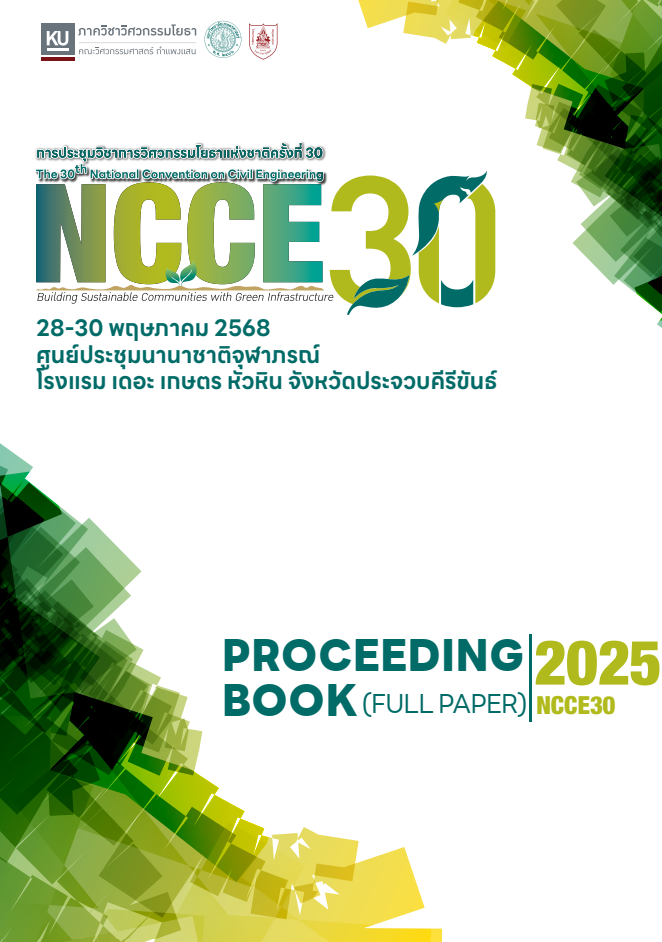Research on the applicability of high-precision underground exploration technology to public roads in Bangkok: Part 2 – Risk assessment of cavities beneath concrete pavement
คำสำคัญ:
Ground penetrating radar, Cavity, Sinkhole, Risk evaluation, FEM, Physical model testบทคัดย่อ
Detection and assessment of underground cavities have become critical in Thailand due to increasing sinkhole-related incidents. In Japan, cavity risks under asphalt pavement are classified into three categories: urgent, monitoring, and no action required, based on cavity depth and size, with detection enabled by advanced Ground Penetrating Radar Mobile Mapping System 3D (GMS3) technology. However, applying this risk classification to concrete pavement in Bangkok is complex due to differing soil and structural conditions. This study employs a two-dimensional finite element method to evaluate typical concrete pavement structures in Bangkok under varying cavity depth and size conditions. The results, categorized by slab responses, were validated through 1-g scaled-down model tests that physically simulated cavities and monitored soil and pavement responses. These findings aim to improve asset management reliability and inform effective maintenance strategies for Thailand’s road infrastructure.
ดาวน์โหลด
เผยแพร่แล้ว
วิธีการอ้างอิง
ฉบับ
บท
การอนุญาต
ลิขสิทธิ์ (c) 2025 Engineering Institute of Thailand

This work is licensed under a Creative Commons Attribution-NonCommercial-NoDerivatives 4.0 International License.
บทความที่ได้รับคัดเลือกนำเสนอในการประชุม NCCE ถือเป็นลิขสิทธิ์ของวิศวกรรมสถานแห่งประเทศไทย ในพระบรมราชูปถัมภ์ (วสท.) (Engineering Institute of Thailand)


